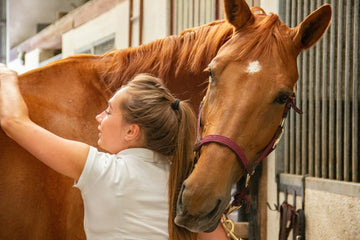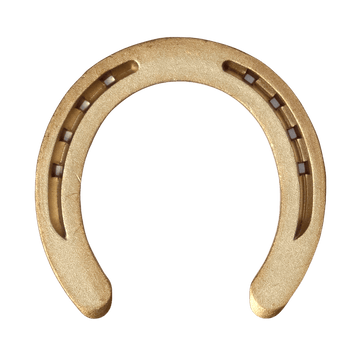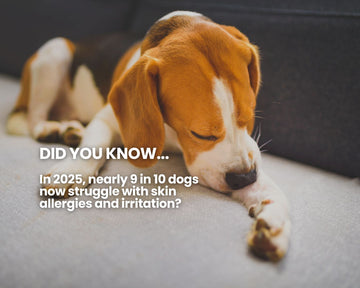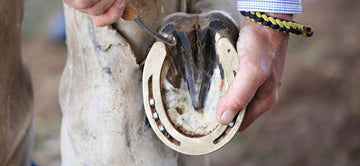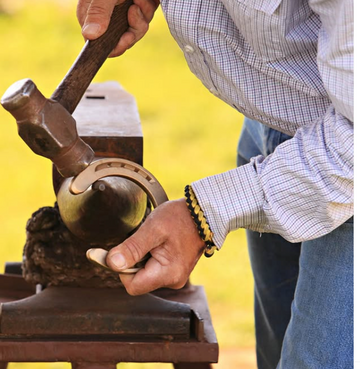Grooming is an integral part of horse care, and having the right tools is essential for maintaining your horse’s health and appearance.
Grooming brushes not only keep your horse clean and comfortable but also enhance the bond between you and your equine friend.
This guide will explore the different types of grooming brushes, their uses, and tips for selecting and caring for them.
Importance of Horse Brushes
Horse brushes are crucial for several reasons:
1. Maintaining Coat Health
Regular brushing removes dirt, dust, and loose hair from your horse's coat, promoting a shiny and healthy appearance. A clean coat allows for better skin health, preventing irritation and infections caused by debris.
2. Distributing Natural Oils
Brushing helps to distribute natural oils throughout the coat, which is vital for maintaining moisture levels. This process prevents dryness and flakiness, ensuring your horse's skin stays healthy and hydrated.
3. Preventing Irritation
Grooming helps to prevent itchiness and irritation by keeping the coat clean and free of foreign materials. Regular grooming sessions can significantly enhance your horse's comfort and well-being.
4. Bonding with Your Horse
Grooming is not just a chore; it’s an opportunity to bond with your horse. Spending time brushing and caring for your horse builds trust and strengthens your relationship.
Types of Horse Brushes
Understanding the different types of grooming brushes is essential for effective grooming. Here’s a breakdown of the key brushes you should have in your grooming kit:
1. Curry Comb
-
Function: The copper curry horse brush is a crucial grooming tool designed to loosen dirt, mud, and hair from your horse’s coat, effectively capturing loose dirt.
-
Material: These combs are often made from rubber or plastic and feature a textured surface to agitate the coat.
-
Usage: Use the curry comb in a circular motion across the body to dislodge dirt and debris, especially in areas prone to caking.
2. Dandy Brush
-
Function: This hard brush is perfect for brushing off dirt and dead hair brought to the surface by the curry comb, ensuring a clean and healthy horse's body.
-
Material: Typically made from stiff, coarse bristles, the dandy brush effectively removes larger particles.
-
Usage: Brush in short strokes, working from the top of the neck to the hindquarters, to sweep away dirt.
3. Soft Brush
-
Function: A soft body brush is used to remove fine dust and particles while bringing out your horse’s natural shine.
-
Material: It features softer bristles, often made from natural fibers or synthetic materials.
-
Usage: Use gentle, sweeping motions to remove fine dust and debris from sensitive areas like the face, belly, and legs.
4. Body Brush
-
Function: This brush is used in circular motions along your horse’s coat to remove dirt and massage natural oils into the skin.
-
Material: Body brushes usually have medium-soft bristles that are gentle yet effective.
-
Usage: Use this brush after the curry and dandy brushes to provide a thorough clean and add shine.
5. Mane Brush
-
Function: Specifically designed to detangle horse hair in the mane and tail, preventing knots and breakage.
-
Material: These brushes often have longer, wider bristles to effectively glide through hair without causing damage.
-
Usage: Start from the ends of the mane or tail, working your way up to the roots gently to avoid pulling.
6. Face Brush
-
Function: A small, soft brush used to clean and shine the horse's face, including the forehead, eyes, and muzzle.
-
Material: Face brushes are typically made from soft bristles to avoid irritation.
-
Usage: Use gentle strokes to clean around the eyes and muzzle, taking care to avoid sensitive areas.
7. Hoof Pick
-
Function: A tool used to clean the hoof’s collateral groove, removing debris and preventing infection.
-
Material: Hoof picks are generally made from metal or sturdy plastic.
-
Usage: Carefully lift the hoof and use the pick to clean out dirt, rocks, and debris from the hoof.
Grooming Tools
Horse grooming tools are essential for maintaining the health and appearance of your horse’s coat. Here are some essential grooming tools to include in your grooming kit:
1. Shedding Blade
A shedding blade is a must-have tool, especially during shedding season, to remove loose hair from your horse’s coat. Typically made of metal or plastic, shedding blades feature “teeth” on one edge that effectively capture and remove loose hairs.
Available in various sizes and designs, including spiral-shaped blades with multiple rows, they cater to different grooming needs.
To use a shedding blade, hold it at a 45-degree angle to your horse’s coat and gently pull it through the hair in the direction of growth.
Be mindful not to apply too much pressure, as this can cause discomfort or even injury to your horse. Regular use of a shedding blade helps keep your horse’s coat clean and reduces the amount of loose hair.
2. Grooming Mitts
Grooming mitts are versatile tools that fit on your hand like a glove, making them perfect for sensitive areas such as the face and legs.
Made from soft, flexible materials, these mitts have nodules or bumps on the palm side that help to remove dirt and loose hair from your horse’s coat.
Grooming mitts are gentle on your horse’s skin and can be used to massage and soothe sore muscles. They are also excellent for reaching hard-to-clean areas, ensuring a thorough grooming session. Simply slip the mitt on your hand and use gentle, circular motions to clean and massage your horse’s body.
3. Sweat Scraper
A sweat scraper is an essential tool for removing sweat and dirt from your horse’s coat after exercise or a bath. Typically made of metal or plastic, sweat scrapers have a curved or angled blade that efficiently removes moisture and debris from the coat.
To use a sweat scraper, hold it at a 45-degree angle to your horse’s coat and gently scrape it through the hair in the direction of growth.
Be careful not to apply too much pressure, as this can cause discomfort. Regular use of a sweat scraper helps keep your horse’s coat dry and clean, preventing skin issues caused by excess moisture.
Choosing the Right Brush
Selecting the right brushes for your horse involves considering several factors:
-
Coat Type: The type of coat your horse has (thick, thin, curly, etc.) will determine the brushes you need. For instance, a horse with a thick coat may require stiffer brushes.
-
Sensitivity: Consider your horse’s sensitivity. For sensitive areas, choose brushes with softer bristles to avoid discomfort.
-
Quality Materials: Opt for brushes made from natural or high-quality synthetic fibers, as these tend to be gentler on the skin and more durable.
-
Ergonomics: Choose brushes that are comfortable to hold and easy to maneuver, especially if you will be grooming for extended periods.
Using Horse Brushes
Grooming Steps
-
Curry Comb: Start with the curry comb to loosen dirt and hair. Use circular motions, focusing on areas with heavy dirt buildup.
-
Dandy Brush: Follow up with the dandy brush to remove the loosened debris. Brush in short strokes, working from front to back.
-
Soft Brush: Use the soft brush to sweep away fine dust and debris, especially on sensitive areas. This will also help enhance shine.
-
Body Brush: After brushing with the curry and dandy brushes, use a body brush in circular motions to massage the coat and distribute oils.
-
Face Brush: Gently use the face brush to clean the horse's face, ensuring you are cautious around sensitive areas.
-
Mane Brush: Carefully detangle the mane and tail, starting at the ends and working up to prevent breakage.
-
Hoof Pick: Finish with the hoof pick, carefully cleaning each hoof to prevent debris buildup and ensure hoof health.
Safety Tips for Grooming
Grooming is an essential part of horse care, but it can also be a source of injury and discomfort for both you and your horse. Here are some safety tips to keep in mind when grooming your horse:
-
Approach Calmly: Always approach your horse calmly and quietly, avoiding sudden movements that may startle them. A calm demeanor helps keep your horse relaxed during grooming.
-
Gentle Strokes: Use gentle, smooth strokes when grooming your horse, and avoid pulling or tugging on their hair or skin. This ensures a comfortable experience for your horse.
-
Tool Usage: Be careful when using grooming tools, such as shedding blades and sweat scrapers. Avoid using them too aggressively or with too much force to prevent injury.
-
Safe Environment: Always groom your horse in a well-lit area with stable footing. Avoid grooming in areas with loose footing or other hazards that could cause accidents.
-
Clean Tools: Keep your grooming tools clean and well-maintained. Regularly clean them to prevent the buildup of dirt and bacteria, and avoid sharing tools with other horses to prevent the spread of infections.
By following these safety tips and using the right grooming tools, you can help to keep your horse’s coat healthy and looking its best.
Grooming not only enhances your horse’s appearance but also strengthens the bond between you and your equine companion.
Caring for Horse Brushes
To keep your grooming tools in good condition:
-
Regular Cleaning: Clean brushes after each grooming session to prevent dirt and bacteria buildup. Shake off excess hair and use water and mild soap if needed.
-
Drying: Allow brushes to dry completely to avoid mold and mildew growth. Store them in a dry, ventilated area.
-
Storage: Keep your brushes organized in a grooming tote or bag to ensure they are easily accessible and prevent damage.
-
Inspect for Damage: Regularly check your brushes for wear and tear. Replace any damaged brushes to ensure effective grooming.
Frequently Asked Questions
What are the different grooming brushes for horses?
Common grooming brushes include curry combs, dandy brushes, soft brushes, body brushes, mane brushes, face brushes, and hoof picks.
What is the order of brushes when grooming a horse?
A typical grooming order is: curry comb to loosen dirt, dandy brush to remove debris, soft brush for finishing touches, body brush for massage, face brush for the face, mane brush for the mane, and hoof pick for hoof care.
What type of brush do you use on a horse?
Use a curry comb for loosening dirt, a dandy brush for removing larger debris, a soft brush for fine dust, and a mane brush for detangling.
What is the difference between a curry comb and a dandy brush?
A curry comb is used to loosen dirt and hair from the coat with its textured surface, while a dandy brush is used to remove the dirt and hair that the curry comb brings to the surface.
Essential Types of Grooming Brushes for Horses Conclusion
Horse brushes are essential tools for maintaining your horse’s coat and overall health. By selecting the right brushes and using them correctly, you can promote a healthy and shiny coat, prevent itchiness and irritation, and strengthen the bond between you and your horse.
It is also important to ensure that you use a great horse shampoo to help with your horse's coat and mane.
Remember to care for your grooming brushes regularly to keep them in good condition and prevent the buildup of dirt and bacteria.
With this guide, you’re well-equipped to embark on your horse grooming journey, ensuring a happy and healthy life for your equine companion.

